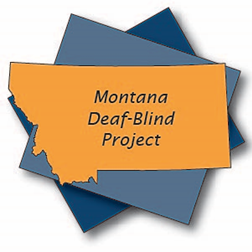Early identification of children who are deaf-blind is a primary goal for the Montana Deaf-Blind Project (MTDB). How many kids in Montana have that dual sensory impairment? Well, it depends on who you ask. According to Director Ellen Condon, the MTDB Project identifies 46 children with deaf-blindness (DB), while other Montana agencies identify far fewer.
That disparity is largely due to a difference in definition. Taken literally, the label implies the absence of vision and hearing, but national definitions (and definitions used by MTDB) are broader. Part C Early Intervention, for example, defines it as a combination of hearing and vision impairment.
Aligning definitions within Montana is important. Vision and hearing are vital to development and influence our ability to understand our world; the earliest possible intervention can mitigate negative effects on development. But disagreement on definition is only one complicating factor. Another is the high incidence of other impairments in children who are DB. “Kids with multiple disabilities are way under-identified,” Condon says.
If a child is diagnosed with one qualifying disability, the evaluation may end there, leaving other issues (also impeding development and learning) unidentified. Or those working with a child may not realize how secondary diagnoses are affecting the child’s ability to learn. “Maybe vision impairment is more obvious, but a professional may not understand how the hearing impairment is impacting access to information,” Condon explains. “Whereas you and I pick up information from sight and hearing, when those senses are impacted, kids need a lot more direct instruction to know what is going on around them. Instruction has to be very strategic and directed to them.”
MTDB Project doesn’t provide direct services to families. Instead, the focus is on identifying children in need of services as early as possible, and helping to build the infrastructure to support all Montana kids with deaf-blindness. Creating a sustainable system of support depends on partnering with other agencies and programs around the state, and building those relationships is a large component of Project Coordinator Theresa Baldry’s work with MTDB. Condon and Baldry hope to increase access to training for professionals who work with students with deaf-blindness.
“Sometimes expectations of students with deaf-blindness are low, unfortunately,” Condon says. “Many times, when we realize how to give them information, and give them a voice, we see amazing things from them. But it takes time.”
How do we increase expectations? By sharing successes, explaining how outcomes could be different, and showing how someone can live and work with supports and the amazing technology available. “People need examples,” Condon says. “They need to know someone did this, and this is how they did it.” Hear some of those stories at Families Matter, or Youth Voices, and let’s work toward raising expectations.

